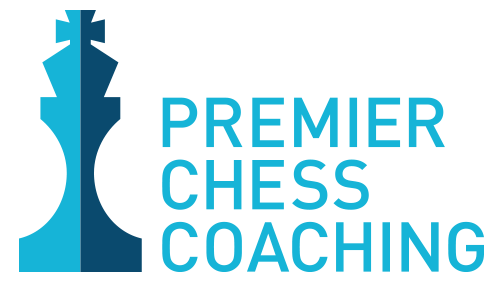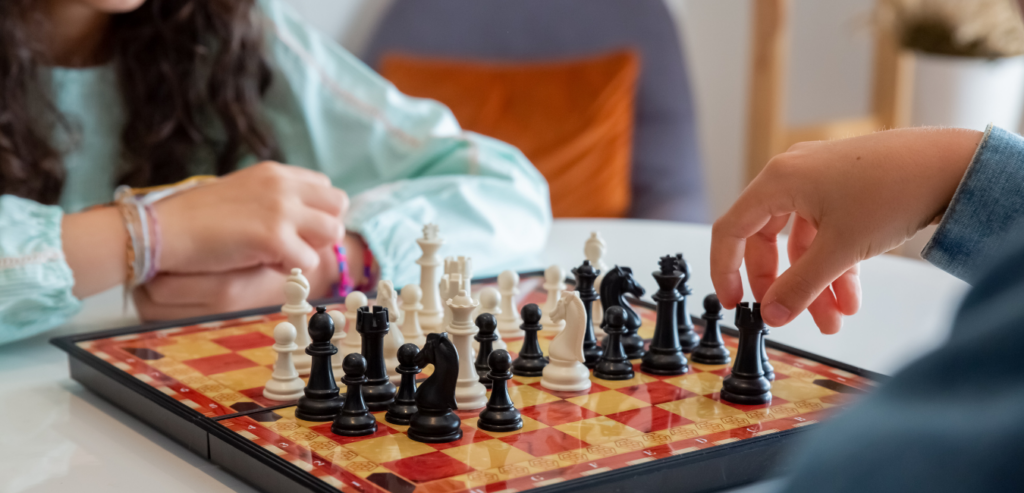Summer is the perfect time to dive into the world of chess. Whether you’re looking for a fun new hobby for your children or a way to sharpen their minds, chess offers endless possibilities. Here’s a beginner-friendly guide to help you and your children get started with chess this summer.
The Basics: How to Play Chess
Chess is played between two opponents on an 8×8 board. Each player starts with 16 pieces: one king, one queen, two rooks, two knights, two bishops, and eight pawns. The goal is to checkmate your opponent’s king, meaning the king is in a position to be captured (in “check”), and there is no legal move to remove the threat.
Basic Rules:
Setting Up the Board:
- Place the board so each player has a white square in the bottom right corner.
- Arrange the pieces on the back rank as follows: rook, knight, bishop, queen, king, bishop, knight, rook. Remember, the queen always starts with her colour.
- Place the White Pawns all on the 2nd rank and the black pawns all on the 7th rank.
How the Pieces Move:
King: Moves one square in any direction.
Queen: Moves any number of squares in any direction.
Rook: Moves any number of squares vertically or horizontally.
Bishop: Moves any number of squares diagonally.
Knight: Moves in an L-shape: two squares in one direction and then one square perpendicular. Knights can jump over other pieces.
Pawn: Moves forward one square but captures diagonally. On its first move, a pawn can move forward two squares.
Special Moves:
Castling: A move involving the king and a rook. The king moves two squares towards a rook, and the rook moves to the square over which the king crosses.
En Passant: A special pawn capture that can occur immediately after a pawn moves two squares from its starting position and lands beside an opponent’s pawn.
Promotion: When a pawn reaches the opposite end of the board, it can be promoted to any other piece (except a king), usually a queen.
Opening Principles
The opening is crucial in setting up your game for success. Here are some basic principles to follow:
Control the Center:
- Aim to control the central squares (e4, d4, e5, d5). This gives your pieces more mobility and control over the board.
- Moves like e4 and d4 are popular opening choices for this reason.
Develop Your Pieces:
- Get your knights and bishops out early. Place them on active squares where they influence the center.
- Avoid moving the same piece multiple times in the opening unless necessary.
King Safety:
- Castle early to protect your king and connect your rooks. This helps in bringing your rooks into play and safeguarding your king.
- Don’t Move the Queen Out Too Early:
Bringing the queen out too early can make it a target for your opponent’s pieces, leading to wasted moves.
Tips for New Players
Play Regularly: The more you play, the better you’ll get. Try to play a few games each week, whether online or with friends and family.
Solve Chess Puzzles: Puzzles help improve your tactical skills. Start with simple puzzles and gradually try more challenging ones.
Watch and Learn: Watch games played by experienced players. Online platforms like YouTube and Twitch have many great chess channels where you can learn strategies and tactics.
Join a Chess Club: Joining a local chess club can provide a community of players with whom to practice and learn.
Have Fun: Remember, the most important part of learning chess is to have fun. Enjoy the process of learning and improving your skills. If you have more questions or are interested in joining a chess club, contact us; we’d be happy to help.


